Discover Awakening Process 101
Awakening Process 101

Awakening Process 101
Author: Pernilla Burke
Subscribed: 16Played: 74Subscribe
Share
© Pernilla Burke
Description
In this podcast, we discuss spirituality, emotional health, healing, and the true meaning of awakening in the context of our modern lives. Our goal is to spark insight and plant seeds on your path by sharing our own experiences—what worked and what didn’t—and encourage you to think outside the box, shift your perspective, and view life and its lessons as moments of learning and awakening.
Pernilla Burke | Founder
Awakening-101.com
pernilla@awakening-101.com
@_awakening_101_
Pernilla Burke | Founder
Awakening-101.com
pernilla@awakening-101.com
@_awakening_101_
56 Episodes
Reverse
In this episode of Awakening Process 101, we explore the nuanced relationship between self-esteem and self-confidence, reflecting on how self-esteem, rooted in our internal sense of self-worth, contrasts with self-confidence, which often grows from external achievements. Through sharing our personal stories—from childhood experiences to the transformative tools of recovery, yoga, and meditation—we discuss how spiritual practices can help rebuild a healthier, more authentic sense of self. Together, we highlight the interplay between spiritual awakening and the emotional growth needed to nurture both self-esteem and self-confidence, offering relatable insights and practical reflections.
(00:00 ) Introduction to Awakening Process 101 and the focus on emotional and spiritual growth.
(00:18) Overview of the episode’s theme: understanding self-esteem and self-confidence through a spiritual lens.
(01:01) How awakening helps us differentiate and strengthen self-esteem and self-confidence.
(02:06) Personal reflections on self-worth and the impact of life experiences on internal growth.
(05:01) Examining how early environments, from families to societal expectations, shape self-esteem.
(07:51) The influence of parenting and family dynamics on cultivating healthy self-worth.
(10:31) The role of 12-step programs in recognizing and rebuilding a healthy sense of self.
(13:01) Yoga, meditation, and their unique contributions to nurturing self-esteem from within.
(16:06) Exploring the energy behind self-esteem and its connection to spiritual practices.
(19:31) How childhood and external validation affect both confidence and inner value.
(23:01) Building self-confidence through external achievements and their limitations.
(25:01 ) Reflections on the healing journey and how spiritual awakening fosters emotional growth.
(28:01 ) Wrapping up with key takeaways, listener engagement, and an invitation to explore further.
In this episode, we explore what it really means to resist nothing. Together we look at how easily we fight what’s here — trying to fix, change, or control life — and how real surrender begins when we allow things to unfold just as they are. We talk about the difference between giving up and letting go, and how awareness itself dissolves resistance. Drawing from Eckhart Tolle, David Hawkins, and Sally Kempton, we reflect on how even pain and fear are part of consciousness expressing itself. When we stop pushing against life, we discover a quiet trust that carries us through every moment.(0:00) Introduction – what “resist nothing” really means and how this simple phrase can shift how we move through life.(2:45) How resistance shows up – the subtle ways we fight what is, often without noticing it.(5:20) Allowing vs. giving up – learning how surrender is not weakness, but deep trust in the present moment.(8:10) The need for control – exploring how control keeps us anxious and disconnected from flow.(11:35) Louise’s story – how surrender appeared through yoga and the moment she stopped performing and simply allowed presence to guide her.(15:05) When self-improvement becomes resistance – how even spiritual work can turn into another way of avoiding what’s real.(18:40) Bringing Eckhart Tolle into daily life – noticing when we’re pushing against reality and returning to presence.(21:25) David R. Hawkins on letting go – seeing resistance and awareness as two sides of the same consciousness.(24:50) Sally Kempton’s wisdom – using breath and meditation to soften into life instead of fighting it.(28:10) Meeting pain and fear – understanding that even discomfort is part of the same awareness that holds everything.(31:45) The freedom of non-resistance – discovering peace that comes from no longer interfering with what is.(35:30) Simple practices – pausing before reacting, breathing into tension, and learning to allow.(38:20) Closing reflections – trusting the unfolding of our lives and remembering that resistance, too, belongs.
This excerpt is a guided meditation from the podcast episode Radical Forgiveness from Awakening Process 101 with Pernilla Burke and Louise Juel.🎧 Full episode: https://open.spotify.com/episode/0MvVVM8couCHDdKzkEFWLV?si=4d2d1e6e3b164ffbIn this gentle practice, we’re invited to explore forgiveness not as a mental exercise, but as an embodied shift. Through grounding, breath, and visualization, we create space to witness the pain, reflect on our own part, and soften around the memory—allowing a sense of freedom to emerge.This meditation is not about forcing forgiveness. It’s about bringing awareness to what still hurts, and letting the light of presence soften it—just enough to see what it came to teach us.#RadicalForgiveness #Awakening101 #GuidedMeditation
In this episode of The Awakening Process 101 Podcast, Louise Juel and I open up the conversation around radical forgiveness—what it really means in our daily lives, why it matters, and how it can shift the way we relate to ourselves and others. Together we share stories from our own lives—marriage, family, recovery, and spiritual practice—and explore forgiveness not as a one-time event but as an ongoing process of softening, releasing, and allowing. We look honestly at the patterns of pride, fear, and codependency that keep us stuck, and how forgiveness becomes a way of life rather than something we check off a list. This episode also includes a short meditation, offering space to pause, breathe, and experience what it feels like to let go and return to freedom.(0:00) Introduction to radical forgiveness(2:15) What forgiveness really means in daily life(6:40) Stories of forgiveness in relationships and family(12:05) Pride, fear, and the roots of resentment(17:20) Codependency and the challenge of letting go(23:00) Forgiveness as a spiritual practice(28:15) How AA and the 12 steps shaped our view of forgiveness(33:40) Moving from blame to compassion(39:10) Forgiveness as a way of life(44:00) Guided meditation on softening and release(51:20) Closing reflections and takeaways
In this episode of Awakening Process 101, Louise Juel and I , Pernilla Burke, explore the real-life practice of parenting teens with awareness, trust, and presence. We share our own experiences—navigating the pull to react from old patterns, pausing to reflect before responding, and finding the right timing for meaningful conversations. Together, we look at boundaries, discipline, and the delicate art of letting our kids find their own way while staying connected. At the heart of it all is the reminder that the deeper our own inner work, the more grounded and wise our parenting can be.(00:00) Introduction – Parenting teens with awareness and trust, and why our own presence shapes the relationship more than any “how-to” advice(02:15) Recognizing our own patterns before reacting, noticing when old fears or experiences are coloring how we see our children(07:40) The power of pausing and timing conversations, allowing space for emotions to settle so dialogue can land in a more open way(12:58) Boundaries and discipline without disconnection, creating structure that feels respectful while still holding clear expectations(18:22) Letting teens walk their own path, resisting the urge to control their choices while offering steady support in the background(24:05) Modeling the behavior we want to see in our kids, showing them through our actions what emotional regulation and respect look like(29:48) Inner work as the foundation for wise parenting, understanding that our self-awareness directly shapes the environment our teens grow up in(34:17) Closing reflections and takeaways, remembering that our relationship with our kids is a long-term, evolving connection that thrives on trust and presence
"Awareness in the Body - Awareness in Life" is the third episode in the Posture series of Tools of Awakening, Abdi Assadi and I, Pernilla Burke, explore the simple yet powerful practice of body awareness and posture as a way to cultivate presence. We look at what happens when we shift our awareness from the mind into the body—specifically, grounding into the feet—and how this shift can change the way we respond to life. Abdi shares insights from Chinese medicine and martial arts on how posture directly affects energy flow, while we reflect on how this practice has reshaped our own daily experiences. We also touch on the fascinating way our own presence influences those around us, from the energy in a room to the way our loved ones respond to us. The episode wraps with a guided practice to help integrate these principles into everyday life—one breath, one step at a time.(01:30) The importance of bringing awareness into the body—how shifting attention from the mind to the body changes our experience of life.(03:20) How posture affects presence and energy flow—exploring the connection between physical alignment and spiritual awareness, with insights from Chinese medicine and martial arts.(05:50) The impact of body awareness on those around us—how being grounded can influence the energy of a room and the people in it.(07:30) Real-life examples of staying grounded in daily situations—Pernilla shares how maintaining presence affects interactions with family, including her children.(09:45) The connection between posture, relaxation, and emotional balance—how proper alignment naturally reduces stress and allows for better decision-making.(10:30) Guided posture awareness practice—step-by-step instructions on aligning the spine, relaxing the shoulders, and feeling connected to the ground.(11:45) Breath awareness exercise for deeper presence—focusing on the breath at the tip of the nose and expanding awareness through the body.(15:10) How awareness naturally leads to relaxation—why presence itself is the key to feeling at ease, rather than forcing relaxation.(17:40) Why “trying to relax” doesn’t work—Abdi explains how shifting attention to specific areas of the body brings effortless calm.(18:30) Closing thoughts and upcoming episodes—what’s next in the Tools of Awakening series, plus a reminder that the guided practice will be available separately for easy access.
In this episode, we explore Chitta Vritti Nirodhaha, the second sutra of Patanjali’s Yoga Sutras, and what it means to quiet the fluctuations of the mind. We explore how thoughts aren’t who we are but rather the byproduct of unresolved emotions—and how awareness is the doorway to freedom. Through personal stories, reflection, and a guided meditation, we look at the ways we can step outside the constant mental chatter and into something deeper: presence.This isn’t about controlling the mind or forcing stillness but about recognizing the space that already exists between thoughts. Whether you’re new to yoga philosophy or simply looking for ways to bring more awareness into daily life, this episode offers practical tools to cultivate more clarity, peace, and connection.(00:00) Introduction and topic overview – Welcoming listeners, introducing the focus on Chitta Vritti Nirodhaha, and why this sutra is central to understanding the mind.(00:48) What Chitta Vritti Nirodhaha really means – Breaking down the direct translation, exploring why it’s more about observing thoughts rather than controlling them.(03:04) The role of awareness in quieting the mind – How awareness allows us to notice mental fluctuations, the connection between self-talk and presence.(06:33) Why we struggle with being present – How daily distractions and automatic habits keep us from noticing our thoughts, and the importance of mindfulness in modern life.(10:03) A personal story about discovering the Yoga Sutras – Pernilla shares the moment she first read Chitta Vritti Nirodhaha and how it shifted her understanding of the mind.(12:26) The connection between thoughts and unresolved emotions – How unprocessed emotions fuel mental chatter, and why recognizing this can be a game changer.(15:02) A simple awareness exercise – A quick practice for shifting attention from the mind to the body, starting with the feet.(16:37) Guided body scan meditation – Moving through the body from head to toe, bringing awareness into different areas to cultivate presence.(25:37) How thoughts trigger our nervous system – Discussing how a single thought can change our emotional state and what we can do to shift that pattern.(32:03) The balance between ego and awareness – Exploring why we need the ego to function in daily life while also cultivating spaciousness beyond thought.(35:05) Bringing spirituality into daily life – How to integrate awareness practices while navigating relationships, responsibilities, and everyday stressors.(38:48) How to create distance from mental chatter – Learning to see thoughts as passing clouds rather than identifying with them, inspired by teachings from Letting Go by David Hawkins.(41:08) Practical tools for cultivating awareness – Meditation, mindful walking, self-reflection, and breathwork as ways to become more present.(42:14) Becoming the observer of your thoughts – The importance of witnessing thoughts without judgment and recognizing the space between them.(43:34) Closing thoughts and listener questions – Reflecting on the discussion, encouraging listeners to share their experiences, and inviting them to reach out with topic requests.
In this episode of Awakening Process 101, Louise and I explore the universal tug-of-war between resistance and allowing. Drawing from David Hawkins’ Letting Go, personal anecdotes, and simple self-awareness practices, we discuss why letting go feels so hard yet brings so much freedom. Whether learning to surrender in a storm or embracing our children’s individuality, we reflect on how small shifts in awareness can create profound changes. This conversation is a candid, heartfelt look at how the human tendency to resist often limits us, and how allowing can unlock ease, lightness, and connection in our lives.
(00:00) Introduction and theme: Resistance vs Allowing – Pernilla and Louise introduce the episode, focusing on resistance challenges and the ease that allowing can bring.(01:45) Why we resist change and the concept of allowing – A discussion on why humans naturally resist change, despite knowing it’s inevitable.(03:34) Exploring resistance to letting go of even good things – Reflection on why letting go of things we enjoy can also feel difficult.(04:02) A quote from David Hawkins’ Letting Go – Pernilla reads an insightful passage about surrendering and the lightness it brings.(06:30) Awareness as the first step in addressing resistance – The importance of recognizing resistance as the initial step toward change.(10:12) Personal story: Surrendering during a stressful travel experience – Pernilla shares a story of letting go of control during a challenging journey.(15:17) Recognizing resistance in the body and asking "Why?" – Insights into how resistance manifests physically and emotionally, and how to question it.(18:02) Practical questions to explore resistance and allowing – Key questions to help identify and address what we’re resisting and why.(20:51) The importance of consistent practice in letting go – Emphasizing the value of daily practices for fostering surrender and ease.(23:03) Small steps to experience lightness and freedom – How small, intentional steps can lead to a sense of emotional and mental relief.(25:04) Journaling as a tool for awareness and growth – The benefits of journaling as a way to track and understand resistance over time.(26:33) Parenting and projection: Letting children find their own path – Pernilla shares lessons on allowing children to explore their individuality without projection.(30:29) Overcoming fear of judgment and embracing individuality – A reflection on how fear of judgment influences resistance and limits self-expression.(38:09) Key questions: "What am I resisting and why?" – Revisiting the importance of asking these questions to uncover deeper insights.(39:10) Closing story: The monkey and the banana metaphor – A powerful metaphor illustrating how holding on can keep us trapped.(39:58) Final thoughts: Awareness and allowing as daily practices – Closing thoughts on making awareness and allowing a consistent part of life.
This episode of Tools of Awakening explores the subtle but powerful connection between posture and presence. Pernilla and Abdi discuss how something as simple as aligning the back of the head and chin can profoundly shift our state of being—bringing calm, clarity, and a sense of ease to both the body and mind. Posture, often overlooked, becomes a gateway to grounding and greater awareness. The conversation is practical and real, offering small adjustments that can ripple into big transformations in daily life. We round off with a guided meditation that helps you connect with your body and breath, making space for stillness and relaxation.
(00:35) Welcome and introduction to posture as a tool for presence – An overview of the importance of posture for connecting with ourselves and the present moment.(01:59) The impact of posture on mind and body connection – How body alignment affects mental clarity and emotional balance.(03:53) Adjusting the chin and back of the head for alignment – Exploring the subtle adjustments that bring ease and stability to the body.(05:37) Demonstration: Finding the natural spot for head alignment – A step-by-step guide to discovering proper head and neck alignment.(08:21) Emotional and physical benefits of proper posture – Discussing the calming ripple effects of posture on the nervous system and mind.(09:08) Challenges of maintaining posture during meditation – The difficulties meditators often face and strategies to stay aligned.(11:14) Simple benefits of relaxed alignment in daily life – Practical advantages, from reducing stress to feeling more centered and present.(13:30) Integrating awareness into everyday activities – How posture awareness can seamlessly fit into walking, driving, and other daily routines.(15:20) Difference between focus and relaxed awareness – Shifting from rigid concentration to an open, gentle mindfulness.(16:01) Guided practice: Body alignment and meditation setup – A practice to align the body and prepare for meditative stillness.(17:24) Guided meditation: Breath awareness through the body – A calming meditation that flows through the body with gentle breath awareness.(22:51) Closing thoughts and integrating practices into daily life – Encouragement to incorporate these tools into daily habits for ongoing transformation.
In this episode of Awakening Process 101, Louise and I share an intimate conversation about meditation—a practice that has deeply transformed both our lives. For me, meditation is more than a habit; it’s a friend, a constant source of comfort, presence, and connection to the infinite. Drawing from my own experience, I talk about how this practice shifted my perspective, helping me realize that the unconditional love, presence, and awareness I sought all along were already within me.
We also explore the practicalities of starting a meditation practice, from the simplicity of one-minute sessions to the profound impact of consistency. Together, we reflect on how meditation provides a moment of stillness in a chaotic world, creating space to breathe, observe, and ultimately respond to life with greater clarity and compassion.
Louise brings her perspective as a Buddhist practitioner, discussing how chanting has provided her with a pathway to connection and infinite love. Along the way, we share laughter, honest insights, and even a short guided meditation to help you take your first or next step on this journey.
This episode is about recognizing meditation as a tool for discovering the best parts of yourself and living with a deeper connection to the people and world around you. Join us and take a moment to connect with the energy behind your thoughts.
Let us know your thoughts pernilla@awakening-101.com
Here’s a more detailed version of the timestamps:
Timestamps(00:00) Welcome and Introduction: Pernilla and Louise kick off the episode by introducing the topic of meditation and its importance in modern life.(02:05) Why Meditation Matters: Pernilla reflects on her personal journey with meditation and how it became a cornerstone of her emotional and spiritual health.(04:30) Meditation as a Friend: Pernilla describes meditation as a nurturing, unconditional presence that provides a sense of love and connection.(09:00) Starting a Meditation Practice: Practical advice on beginning with short, consistent practices, like one-minute sessions, and the importance of timing.(12:20) Meditation and Sobriety: Pernilla shares how meditation became a supportive practice during early sobriety and helped her navigate emotional challenges.(16:00) Breaking Free from Emotional Attachments: How meditation fosters awareness of thoughts and emotions, allowing for healthier relationships and responses.(18:10) The Role of Breath: Discussion on how breathing deeply activates the parasympathetic nervous system, creating relaxation and focus.(21:00) Guided Meditation: A short, calming meditation led by Pernilla to help listeners step into stillness and presence.(24:50) Chanting and Mantras: Louise shares her experience with chanting as an active form of meditation and a path to connecting with infinite love.(28:30) Demystifying Meditation: Addressing misconceptions, including the idea that meditation is about stopping thoughts entirely, and encouraging simplicity.(33:00) The Long-Term Impact of Meditation: How consistent practice transforms thoughts into “fluffy clouds” and creates a lasting sense of stillness.(36:40) Meditation in Daily Life: Practical examples of how meditation helps respond to life’s challenges with compassion and clarity.(40:00) Closing Thoughts: Pernilla and Louise emphasize that meditation is a gift to yourself and those around you, offering a path to deeper connection and peace.
In this episode of Awakening Process 101, we discuss the concept of change. Change is inevitable—sometimes it sweeps in like a storm, other times it unfolds quietly over time. In this episode, Louise Juel and I reflect on how change has shaped our lives, sharing personal stories and insights from our spiritual journeys. We talk about surrender—not as defeat, but as a gateway to clarity and transformation. Life’s challenges, even the painful ones, hold the potential for profound growth when we meet them with awareness. This conversation is a reminder that no matter where you are, change is always possible—sometimes when you least expect it.
(00:00) Introduction – Embracing Change: An inspiring opening reflecting on how change is woven into every aspect of life, why it can be so challenging, and how embracing it leads to deeper self-awareness and growth.
(03:15) Why We Resist Change: A dive into the psychological and emotional barriers that make us resist change, including fear of the unknown, attachment to comfort, and the stories we tell ourselves about stability.
(08:45) Personal Stories of Transformation: Pernilla and Louise share deeply personal stories of life-altering events that initially felt overwhelming but ultimately led to new perspectives, greater strength, and a renewed sense of purpose.
(14:30) The Power of Surrender: A heartfelt discussion on how surrendering isn’t about giving up, but rather releasing resistance to allow life’s natural flow to guide us toward opportunities we couldn’t see before.
(19:00) How Pain Can Lead to Growth: Exploring how emotional pain, grief, and hardship can become transformative teachers, helping us build resilience, self-compassion, and an expanded understanding of our true nature.
(24:10) Finding Strength in Uncertainty: Practical reflections on staying grounded and centered when life feels unpredictable, including how to cultivate inner stability and trust in the unfolding process.
(29:45) Tools for Navigating Life's Challenges: Offering practical tools like mindfulness, breathwork, meditation, and reflective journaling that help ease life transitions while fostering emotional balance and clarity.
(35:20) Trusting the Process of Change: Insights on how to build trust in life’s process, even when we can’t see the full picture, and how surrendering can lead to unexpected blessings and personal breakthroughs.
(40:00) Closing Thoughts – Change Is Always Possible: An encouraging reminder that no matter where we are on our journey, change is always possible when we remain open, curious, and willing to grow through life’s experiences.
"The Power of Alignment: Simple Tools for Calm and Presence"
This Tools of Awakening class is the first class in series highlighting posture as a practical way to reconnect with the body and support the nervous system. Simple practices, like aligning the chin or bringing awareness to the feet, can help shift from a reactive state into calm presence. Building on previous breathwork teachings, these accessible techniques fit effortlessly into daily life—whether during conversations or a commute—providing effective tools to stay grounded and deeply connected to yourself.
(0:00) Introduction to posture as a tool for awareness, grounding, and nervous system support.
(0:33) Explanation of the fight-or-flight state and how posture can shift us into calm presence.
(1:15) Practical exercise on grounding awareness through the connection of the feet to the ground.
(1:42) The role of chin alignment in improving posture, reducing anxiety, and supporting physiology.
(2:59) How posture reflects emotional states like anxiety or codependence.
(3:47) Tips on elongating the spine, lifting the skull, and softening the chin for better alignment.
(4:36) Expanding awareness from the spine to the feet to cultivate a rooted presence.
(6:03) Shifting energy from headspace to grounded awareness through posture practices.
(7:41) Step-by-step breath awareness exercise to synchronize posture and breath.
(12:20) Closing thoughts on integrating these tools into daily life and reflections on their impact.
Holding Space: Strengthening Relationships Through Presence and Compassion
In this episode of Awakening Process 101, we examine the subtle yet powerful concept of "holding space." Louise and I share what it means to be fully present for someone—whether that’s a friend, a student, or even ourselves. We reflect on the challenges and growth that come with learning to listen without needing to fix or guide. Through personal stories, we invite you to see holding space as a practice that opens the way for genuine connection and emotional freedom for everyone involved.
(00:00) Introduction to the Podcast and Hosts
Pernilla Burke and Louise Juel introduce themselves and share a bit about their backgrounds and the purpose of the podcast.
(00:48) Topic Introduction: "Holding Space"
The hosts introduce the episode’s focus on the concept of "holding space," setting the stage for an in-depth exploration of what it means in different contexts.
(01:12) Defining Holding Space: Personal Boundaries and Respect
They start by discussing the basics of holding space, emphasizing the importance of respecting boundaries and not intruding on another person’s emotional space.
(02:02) Real-Life Example: Parenting and Holding Space
Pernilla shares a personal story on the challenges of holding space as a parent, where the urge to fix often conflicts with the need to simply be present.
(03:45) Importance of Conscious Awareness
The conversation turns to how cultivating conscious awareness helps in holding space effectively, especially when emotions run high.
(06:08) Personal Story: Impact of Setting Boundaries
Pernilla reflects on an instance with her husband where setting clear boundaries around conversations created a healthier, more respectful space.
(10:09) Discovering Holding Space as a Yoga Teacher
Louise talks about her journey in understanding holding space through teaching yoga and how it extends to creating a safe environment for her students.
(15:10) Types of Holding Space: For Self, Family, and Students
The hosts outline the different types of holding space, from supporting loved ones to holding space for oneself, each requiring unique skills.
(18:10) The Role of Breath in Holding Space
They discuss the practice of using breathwork to center oneself, which fosters a calm, present state conducive to holding space.
(25:33) Everyday Practice: Holding Space While Driving
Pernilla gives a relatable example of how she uses the drive to school as a space to practice presence and calm, even in stressful moments.
(30:00) Managing Physical Needs for Self-Care
The importance of attending to physical needs like food, water, and rest is emphasized as foundational for creating the capacity to hold space.
(33:10) Holding Space in Crisis Situations
Pernilla recounts experiences where holding space was crucial during family health crises, highlighting the value of calm, supportive energy.
(39:33) Techniques: Practicing Awareness and Response
The hosts explore different techniques for building awareness, noting the importance of responding mindfully rather than reacting impulsively.
(43:07) Recap of Key Concepts and Takeaways
The discussion wraps up with a summary of the essential points on holding space and some practical takeaways for listeners.
(45:00) Closing Remarks and Final Thoughts
Pernilla and Louise thank listeners for joining and encourage them to integrate the practice of holding space into their own lives.
Let me know if this is the format you prefer!
In this podcast, we dive into the world of spirituality, emotional well-being, healing, and what awakening truly means in today’s world. Our goal is to spark insight and offer perspectives that could enrich your own journey, sharing what we’ve learned along the way—both the wins and the setbacks. Each conversation serves as a guide, inspiring you to see life’s lessons as opportunities for growth and awakening. This podcast is for anyone seeking a deeper connection with their inner self.
Healing Subconscious Patterns: A Path to Transformation and Self-Discovery
In this episode, we explore the process of healing subconscious patterns—a journey that, as we’ve both discovered, requires more than one approach. We talk about how real transformation unfolds over time, using practices like therapy, yoga, meditation, and bodywork. Drawing from our personal experiences, including recovery and self-reflection, we share how awareness, curiosity, and trust in the process are key to uncovering and releasing deeply ingrained patterns. Healing is gradual, but with each layer we work through, we move closer to a more authentic sense of self. Join us as we reflect on what we’ve learned and encourage you to embrace your own path to healing.
(00:00) Introduction and WelcomingWe greet listeners, express gratitude for their time, and set the tone for today's discussion.
(01:03) Introducing the Topic: Healing Subconscious PatternsWe introduce the episode's theme, explaining that healing subconscious patterns requires multiple approaches rather than a one-size-fits-all solution.
(02:18) Overview of Healing Tools: Therapy, Yoga, MeditationWe talk about how various tools—therapy, yoga, and meditation—work together in the process of healing, each contributing to different aspects of growth.
(03:50) Pernilla’s Journey of Addiction RecoveryPernilla shares her personal story of recovery, highlighting how different stages of healing revealed deeper emotional and subconscious patterns.
(05:05) How Different Practices Work Together in HealingWe emphasize how a holistic approach, incorporating various healing practices, builds a stronger foundation for lasting transformation.
(07:15) Exploring the Layers of Subconscious PatternsWe explore the idea of healing as peeling back layers, using a variety of tools to uncover hidden aspects of ourselves.
(09:20) Curiosity vs. Pain as Motivators for ChangeWe discuss how both pain and curiosity can drive healing, with pain often initiating the process and curiosity sustaining it.
(12:45) Importance of Awareness in HealingWe talk about how awareness of subconscious patterns takes time to develop, sharing personal examples of moments of clarity.
(15:30) Emotional Insights Through RelationshipsPernilla reflects on a past relationship that helped reveal important emotional patterns, illustrating how relationships can serve as mirrors for growth.
(18:50) The Role of Meditation in Seeing PatternsWe explain how meditation calms the mind, allowing hidden patterns to surface and be released.
(21:30) Bodywork and Storing Emotions in the BodyWe discuss how emotions are stored in the body, and how bodywork can help release these stored tensions.
(23:10) Using Multiple Healing Tools for Deep ChangeWe highlight the importance of combining different healing methods, as no single practice can address all layers of the subconscious.
(26:00) Healing as a Gradual ProcessWe remind listeners that healing is a gradual process, requiring patience and trust in the unfolding journey.
(28:45) Wrapping Up: Embracing the Journey of Healing Subconscious PatternsWe close the episode by encouraging listeners to embrace the healing process and trust that each step brings them closer to their true selves.
“Mastering the Breath: Simple Practices for Greater Awareness” is the fifth class in a five-part series on the Breath hosted by Abdi Assadi and Pernilla Burke.
In this fifth episode of Tools of Awakening, we’re continuing our exploration of practical breathing techniques. We go through nostril awareness, abdominal breathing, and three-part breathing, with an added focus on exhaling through the mouth to release tension and stagnant air. These simple practices help us ground ourselves, calm the mind, and feel more connected to the body. As always, it's about bringing awareness back to the present moment in an easy, accessible way that anyone can practice, regardless of where they are on their journey.
(00:00) Introduction to the Tools of Awakening Series – Pernilla Burke introduces the episode and explains the focus on practical breathing techniques to help calm the mind and body.
(00:35) Overview of Breathing Practices – Recap of nostril awareness, abdominal breathing, and three-part breathing, with an emphasis on the importance of exhalation.
(01:13) Guided Nose Tip Awareness Practice – Guided practice bringing awareness to the breath at the tip of the nose, feeling the cool air enter and warm air exit.
(02:03) Following the Breath: Chest and Belly Awareness – Focus shifts from the nose to the chest and belly, encouraging listeners to follow the natural rhythm of their breath.
(05:15) Three-Part Breathing Exercise – Listeners are guided through a full-body breathing exercise, filling the lower, middle, and upper lungs before exhaling.
(07:02) Exhaling Through the Mouth Practice – Introduction of exhaling through the mouth, helping to release tension and expel stale air more effectively.
(08:02) The Importance of Complete Exhalation – Discussion on the importance of fully exhaling to remove stale air and tension, along with a simple tongue technique to aid the process.
(10:09) Exhalation Counting Exercise – Guided practice in counting during exhalation to fully release air and extend the breath.
(11:11) Putting It All Together: Full Breathwork Practice – Combining all the techniques—nostril awareness, three-part breathing, and counting during exhalation—into a cohesive practice.
(13:01) Closing Practice and Final Thoughts – Final breathwork session and reflections on the benefits of regular breath awareness practice for relaxation and connection.
In today’s episode, Louise and I explore the concept of “the gap” — that space between and behind thoughts, where time seems to slow down, and we get a sense of who we are beyond the mind’s constant chatter. This pause is more than stillness; it’s a doorway into something deeper, a way to access the universal Self. We talk about how the gap has appeared in our lives, share some of our struggles with finding it, and how it’s become a valuable tool for experiencing more presence and calm. We’ll guide you through a meditation so you can experience it for yourself and share tips on cultivating more of these moments daily, whether you’re meditating, spending time in nature, or simply focusing on your breath.
(0:00) Introduction and Welcome Meet Pernilla Burke and Louise Dual Severin as they set the stage for today’s episode.
(1:05) The Gap Between Thoughts Exploring the concept of “the gap” — a space between thoughts and breaths.
(2:06) The Power of the Pause Understanding how the gap can open the way to deeper awareness.
(3:57) Using Breath to Access the Gap How the pauses in breath can reveal this space.
(5:55) Guided Meditation Preparation Setting up for a guided meditation.
(6:59) Guided Meditation A practice to help listeners notice the gap between breaths.
(17:23) Applying the Practice in Daily Life Real-world challenges and solutions for accessing the gap.
(19:55) Beyond the Meditation Cushion Tips on bringing this awareness into everyday activities.
(21:03) Living the Present Moment Using breath and awareness to stay grounded, even in difficult situations.
(26:20) The Gap as a Doorway Reflections on accessing presence during tough times.
(30:12) Personal Reflections Sharing experiences of surrendering into the gap.
(35:00) Finding Flow and Ease Real-life moments of stillness and presence.
(39:05) Simple Ways to Access the Gap Everyday tips for cultivating the gap in routine tasks.
(42:30) Connecting to the Universal Flow How the gap connects us to a greater sense of being.
(46:00) Recap and Key Takeaways Highlighting the importance of surrendering to the present moment.
(47:10) Closing Thoughts Final reflections and gratitude.
In this podcast episode by Awakening Process 101 team, Pernilla Burke and Louise Juel, explore the theme "Responsibility is Freedom." We begin by introducing the Awakening 101 website and the tools we've created, such as the Awakening Process Mandala, which helps people on their spiritual journey. We share personal experiences of spiritual growth and the challenges we’ve both faced in understanding what it means to be truly present.
As we discuss, we reflect on how taking responsibility for our lives leads to a sense of freedom. Pernilla shares a story from her journey to sobriety, illustrating how accepting responsibility for her actions became a liberating force. We both talk about how embracing responsibility has helped us navigate fears, set boundaries, and understand the importance of showing up for ourselves. While responsibility might seem overwhelming at times, we recognize that it ultimately empowers us, giving us a stronger sense of self.
During the episode, we also guide a brief meditation focused on the heart chakra, inviting everyone to step into the present moment with love and awareness. We wrap up by encouraging listeners to take responsibility in different areas of life—whether it’s finances, relationships, or personal growth—as a key to unlocking freedom and building self-confidence.
(00:00) – Introduction and welcome(02:00) – Pernilla introduces herself and Awakening 101(03:40) – Purpose of the podcast and discussion on spiritual growth(05:25) – Introduction to the Awakening Process Mandala and its role in being present(08:00) – Discussion on the meaning of being present and how spiritual tools help(09:00) – Meditation guided by Pernilla (heart chakra focus)(16:45) – Transition from meditation to today’s topic: Responsibility is Freedom(18:50) – Discussion on responsibility and how it leads to freedom(21:30) – Pernilla shares her sobriety story and taking responsibility for her actions(24:00) – Louise shares her experience with responsibility and sobriety(30:50) – Discussion on responsibility in relationships and with others(35:45) – Talk on financial responsibility and the freedom it brings(42:00) – Reflection on how to empower others, like children, to take responsibility(49:30) – Wrap-up and reflection on responsibility and self-confidence(50:45) – Closing thoughts and invitation for listeners to share their experiences
"Grounding ourselves through the Breath," is the fourth class in a five-part series on the Breath hosted by Abdi Assadi and Pernilla Burke.
In this episode of the "Tools of Awakening" series, we dive into the fourth class focused on breath awareness and its transformative power. We emphasize how breath connects us to our feelings, which many of us unconsciously avoid due to discomfort. By practicing simple breathing techniques, like nostril and abdominal breathing, we can cultivate a deeper connection to both our breath and emotions, helping us process feelings gently.
We begin the session with a guided abdominal breathing exercise, followed by a three-part breathing technique. We explain how modern stress leads to shallow, chest-only breathing, and how deeper, abdominal breathing can ground the body and calm the mind. We also highlight how attention directs energy within the body, stressing the importance of grounding awareness in the lower body for relaxation.
Throughout the episode, we share practical tips for deepening breathwork, including the use of physical objects to practice abdominal breathing. We conclude with a discussion on the importance of fully exhaling to release stale air, allowing for a more complete and beneficial inhale.
We encourage everyone to practice these techniques regularly to build a better relationship with their breath, which fosters emotional balance and self-awareness.
(00:00) Introduction and welcome:Pernilla welcomes listeners to the fourth class in the breath series, joined by healer and spiritual counselor, Abdi Assadi, to explore breathing techniques.
(00:47) Overview of breathing techniques:Pernilla reviews nostril awareness, a simple technique to help center the mind, emphasizing the importance of repetition for building familiarity and connecting with emotions.
(03:10) Common breathing challenges:Abdi explains that avoiding breath is often linked to avoiding emotions, which begins early in life. Shallow breathing blocks both discomfort and positive emotions.
(05:31) Guided abdominal breathing exercise:Pernilla leads an abdominal breathing exercise, encouraging listeners to focus on how the abdomen moves and suggesting hand placement for better awareness.
(10:06) Pernilla’s reflection on breath grounding:Pernilla shares how abdominal breathing grounds her, helping connect with her lower body and shift energy from the mind.
(11:20) Abdi on energy flow and attention:Abdi explains that where we place attention, energy flows. Breathwork helps bring focus back to the body, countering the habit of external focus.
(12:32) Introduction to three-part breathing:Abdi introduces three-part breathing, filling the lower, middle, and upper lungs in one breath, improving oxygen intake and reducing shallow breathing.
(18:10) Practical tip for abdominal breathing:Abdi recommends placing heavy objects on the belly to practice abdominal breathing and emphasizes fully exhaling to clear stale air.
(19:35) Closing remarks:Pernilla and Abdi stress the importance of exhalation in breathwork and encourage regular practice at home.
"How much is shallow breathing costing your overall well-being?" is the third class in a five-part series on the Breath hosted by Abdi Assadi and Pernilla Burke.
In this class, Pernilla Burke and Abdi Assadi, both experienced spiritual practitioners, present the third session of their "Tools of Awakening" series, focusing on the power of breath as a transformative tool for mind, body, and spirit. This session is part of a broader effort to teach simple, accessible practices that help individuals become more aware, reduce stress, and navigate life with greater consciousness.
This class highlights the importance of conscious breathing, especially in a world where most people breathe shallowly and unconsciously. This lack of awareness in breathing is connected to various issues, such as heightened anxiety, emotional repression, and physical tension. The goal of the class is to teach viewers how to integrate mindful breathing into their daily lives as a way to increase awareness, reduce reactivity, and move through life in a more peaceful and grounded manner.
(00:00 - 01:10) IntroductionPernilla Burke introduces the class and her collaborator, Abdi Assadi.Overview of the tools of awakening and focus on breathing techniques.
(01:11 - 03:00) The Importance of BreathingDiscussion on how breathing is often shallow and unconscious in most people.Introduction to the concept of grounding consciousness through breathing.
(03:01 - 05:00) Emotional Connection to BreathingExplanation of how breathing impacts emotional processing.Discussion on how people subconsciously modulate emotions through shallow breathing.
(05:01 - 07:00) Awareness of Emotional State and BreathingHow breathing exercises help in recognizing and managing emotional states.The role of breathing in reducing incessant thinking and stress.
(07:01 - 09:00) Physical Effects of Breathing and RelaxationDiscussion on the connection between breathing and muscle tension, particularly in the shoulders.Importance of using the diaphragm for proper breathing.
(09:01 - 11:40) Guided Breathing Exercise: Nostril AwarenessPractical demonstration of nostril awareness breathing.Emphasis on feeling the temperature difference between inhaled and exhaled air.
(11:41 - 14:30) Guided Breathing Exercise: Abdominal AwarenessIntroduction to abdominal breathing in conjunction with nostril awareness.Guided practice focusing on diaphragm movement and abdominal relaxation.
(14:31 - 16:50) Meditation and the Body-Mind ConnectionDiscussion on how meditation and breathing provide a break from constant thinking.The concept of reconnecting with the body through mindful breathing.
(16:51 - 18:50) Quick Breathing Resets for Daily LifeEmphasizing the simplicity and effectiveness of short breathing exercises.Encouragement to incorporate breathing techniques into daily routines.
(18:51 - End) Conclusion and EncouragementClosing remarks.Reminder about the availability of standalone breathing practice recordings and the importance of giving oneself the gift of mindful breathing.


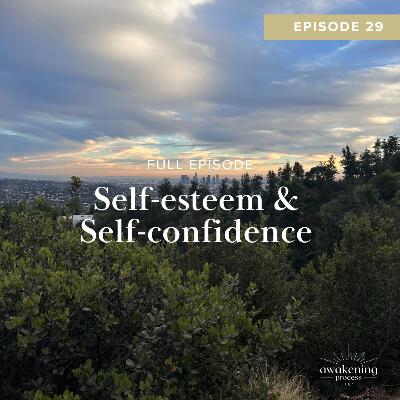
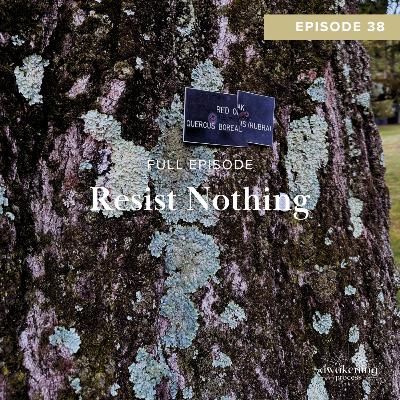
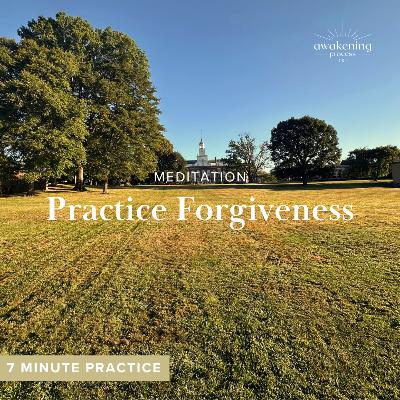
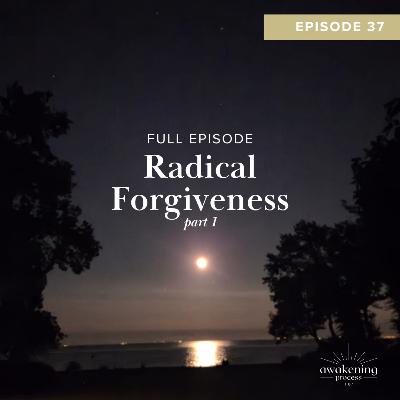

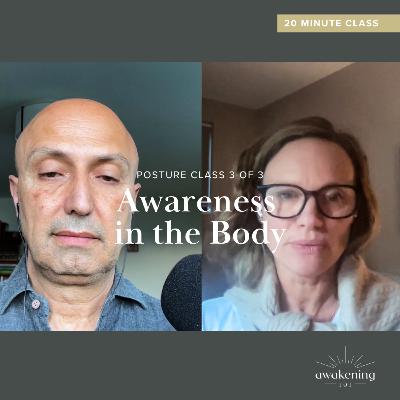
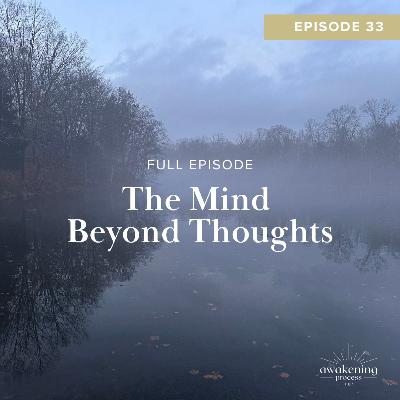
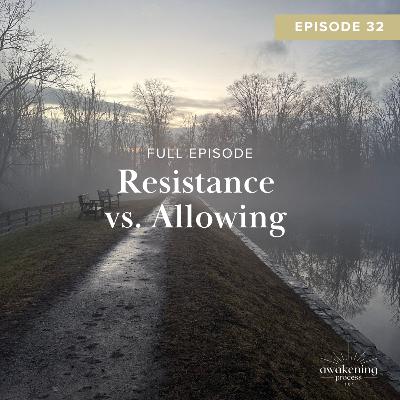
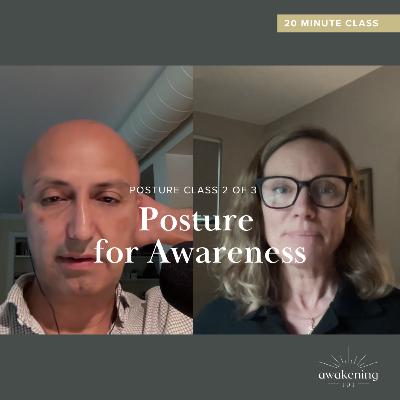
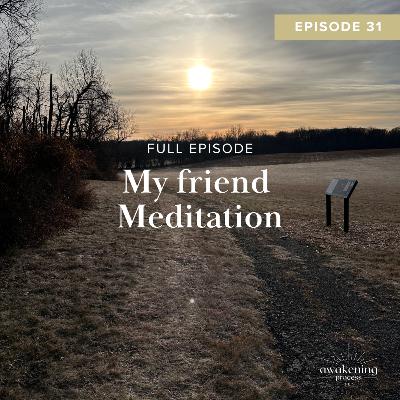
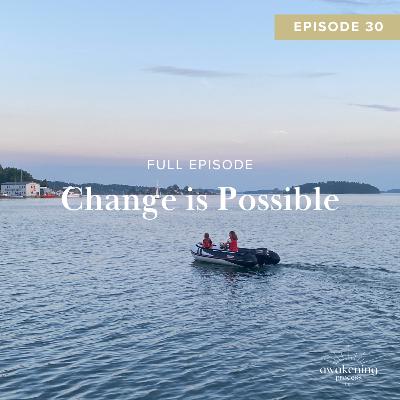
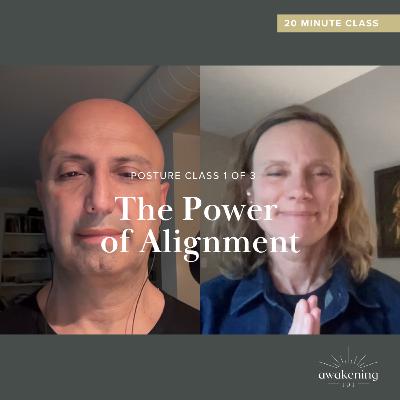
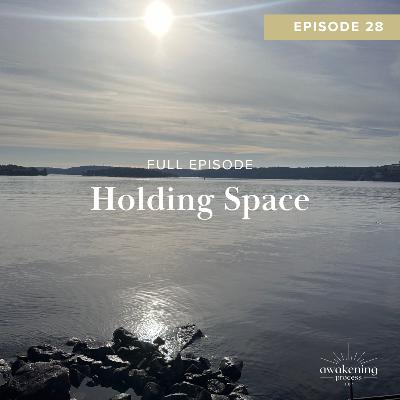
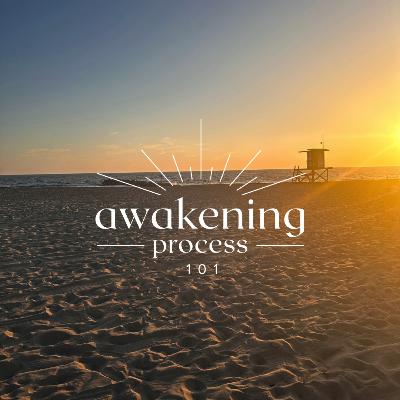
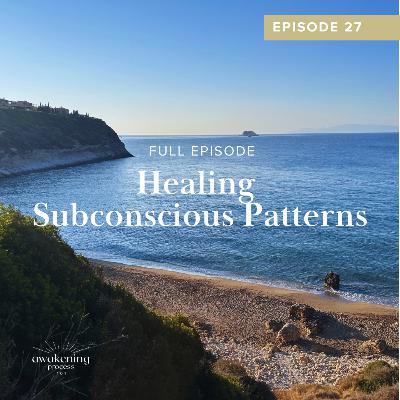
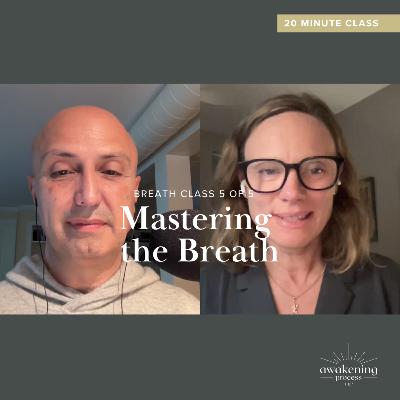
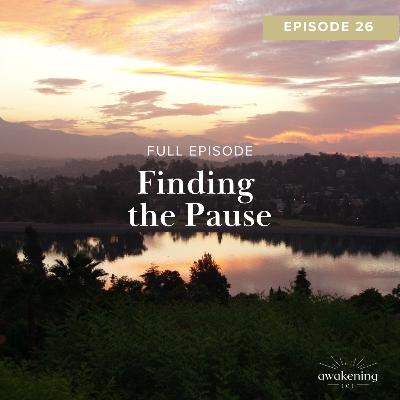
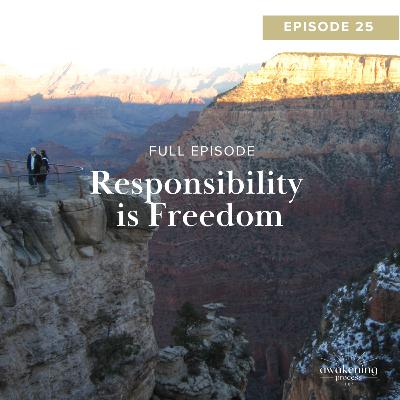
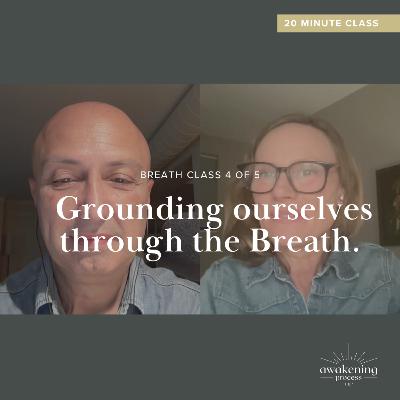
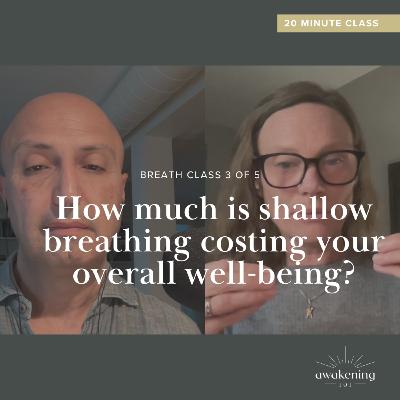



Taking time for self-care and renewal, like in the “Breath Class: An Appointment with Yourself,” is essential for personal growth and clarity. Similarly, staying organized with life’s practical matters can bring peace of mind. That’s why https://nbiappointment-ph.ph/nbi-clearance-renewal/ offers Filipinos a simple way to manage and renew their NBI Clearance online, keeping important tasks stress-free and efficient.